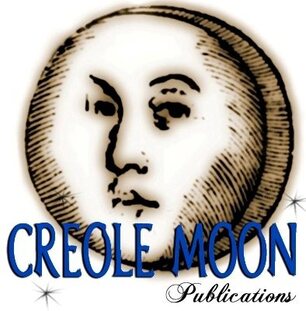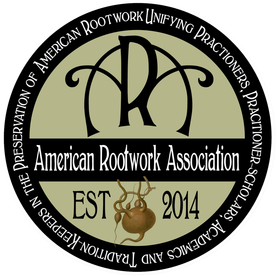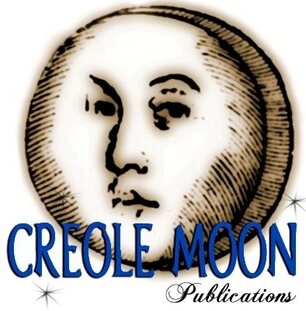|
By Danielle N. Boaz, Associate Professor of Africana Studies, University of North Carolina, Charlotte For decades, it has been common for people to throw around terms like “voodoo politics,” “voodoo economics,” “voodoo science” and “voodoo medicine” to reference something that they think is ridiculous, idiotic or fraudulent. Horror movies and crime shows often tell stories about evil “voodoo doctors” who terrorize their victims with black magic. Even Disney’s first movie with a Black princess, released in 2009, had a “voodoo doctor” as the villain. Unfortunately, these shows and movies promote myths about voodoo that reinforce more than a century of stereotypes and discrimination. In my 2023 book, Voodoo: The History of a Racial Slur, I argue that voodoo is an extremely problematic term with a deeply racist history. Most African diaspora religions, which are religions that have roots in Africa, have been mislabeled as voodoo at some point in time. This is especially true of Haitian Vodou – the religion that is most frequently stereotyped by outsiders as “voodoo” in the 21st century. Early uses of the term The term voodoo traces its roots back to a word in the Fon language in West Africa that means “spirit” or “deity.” The French adopted a version of this term, “vaudou” or “vaudoux,” to refer to African spiritual practices in their colonies in Louisiana and Saint-Domingue – modern-day Haiti. Later, “vaudou” evolved into “voodoo” in the English-speaking world. It first became a household term in the U.S. in the 1860s and 1870s. When the U.S. public was first introduced to voodoo, it was typically in newspaper articles and other publications that described African American spiritual practices in an exaggerated way, often retelling bizarre or even fabricated stories as if they were common practice. Most of the time, the authors used these narratives about voodoo to argue that African Americans were unfit for citizenship, voting rights and holding public office because of their so-called superstitions. In fact, the first time the term was widely used was after the Union forces seized New Orleans during the U.S. Civil War. Confederate supporters argued that the popularity of voodoo in Union-controlled New Orleans showed the barbarity that Africans would return to if not under the control of white people. Later, in the 20th century, claims about voodoo were used as one way to justify the U.S. colonization of Caribbean countries with large Black populations. In particular, fabricated claims that Black Cubans were practicing the ritual murder of children as part of their voodoo practices circulated in the media to support sending forces to the island in the 1900s and 1910s. Similarly, in the early 20th century, journalists, travelers and others falsely claimed that U.S. intervention was necessary because Haitians were engaging in cannibalism, human sacrifice and snake worship as part of their voodoo rituals. Historian Kate Ramsey writes in her 2011 book, The Spirits and the Law: Vodou and Power in Haiti, that while U.S. Marines were occupying Haiti from 1915 to 1934, they persecuted and prosecuted devotees – arresting the people they found participating in ceremonies and burning their sacred objects. Meanwhile, in the first half of the 20th century, references to voodoo continued to be a way to speak disparagingly about Black populations in the U.S. Even the founders of the Nation of Islam were stereotyped as a “voodoo cult” after an alleged member committed a highly publicized murder in 1932. Allegations that Black Muslims practiced human sacrifice followed the group for decades, long after the person who committed the crime was determined to be legally insane and sent to an asylum. Prejudices linger This history has left a stain on public perceptions of voodoo that is difficult to wash away. The best example is the treatment of devotees of Vodou, a religion in Haiti that can trace many of its beliefs and practices back to West and Central Africa. Vodou centers on honoring the ancestors and venerating spirits known as the Lwa. Vodou was frequently labeled as “voodoo” in Anglophone newspapers and other literature in the late 19th and early 20th centuries, and devotees were falsely accused of committing atrocities like cannibalism and human sacrifice during their ceremonies. Although Vodou has no ultimate source of evil in its cosmology, it is often denounced as devil worship. These myths have led to discrimination and violence against devotees. In 2010, some Haitians and some foreigners blamed Vodou, which they often misspelled as “voodoo,” for the tragic earthquake and subsequent cholera outbreak that devastated Haiti. The most famous remarks came from the late Pat Robertson, an Evangelical minister and political commentator, who claimed that the earthquake was God’s retribution against Haitians for holding a Vodou ceremony. He described the Vodou ceremony as a pact with the devil to assist in their revolution against the French. Within Haiti, some people committed acts of violence against devotees and denied them the emergency aid that was sent to quake victims. Later that year, violence escalated as some Haitians blamed Vodou for the cholera outbreak. In November and December of 2010, lynch mobs violently killed dozens of Haitian Vodou priests. Unfortunately, discrimination and the violence perpetrated against Haitian Vodou and other African diaspora religious groups often goes unpunished and unnoticed. In fact, a recent survey suggests that a large portion of the U.S. public subscribes to the stereotypes about voodoo that led to these attacks. With support from the Public Religion Research Institute, my fellow researchers and I asked 1,000 adults living in the U.S. whether they used the term “voodoo.” Two in 10 respondents, or about 20%, said they had used or heard others use the term at least once a month. The survey found fewer than 1 in 4 considered voodoo to be a religion. Further, approximately 3 in 10 respondents believed that followers of voodoo were more likely to be involved in criminal activity than the average person, and an astonishing 64% said they believed that followers of voodoo were more likely to practice black magic or witchcraft than the average person. This survey shows the pervasiveness of these biases that developed to support slavery and imperialism. Therefore, I argue that when someone makes a statement like, “That just sounds like some ‘voodoo’ to me!” they are co-signing the long racist history of the term and promoting the idea that religions from Africa are primitive, evil and barbaric. *This article was originally published on The Conversation. #Discrimination #Colonialism #Stereotypes #Haiti #West Africa #Votingrights #Africandiaspora #Frenchcolonies #voodoo #Racialslur #Religionandsociety
0 Comments
by Eoin Lettice, Lecturer in Plant Science, University College Cork Christmas nativity scenes across the world feature three kings – also known as the “wise men” or Magi – bringing gifts of gold, frankincense and myrrh to the newborn baby Jesus in Bethlehem. In the Bible, Matthew’s gospel tells us that the wise men “saw the child with his mother Mary, and they bowed down and worshipped him. Then they opened their treasures and presented him with gifts of gold, frankincense and myrrh.” As a child, I remember thinking how gold seemed like an obvious choice, but that the other two gifts seemed a bit like last-minute purchases – the biblical equivalent of getting socks for Christmas. The mention of “treasures” in Matthew’s gospel is so important, however, because it gives us an indication of how all three of these items were viewed at the time. Frankincense and myrrh had been in use for thousands of years before they turned up in Bethlehem. Frankincense has long been mixed with various spices to form incense, and myrrh was used by the ancient Egyptians as an embalming agent. Both have been promoted as cures for a variety of ailments, from digestive trouble to pain relief. At the time of Jesus, these gifts were worth the same as, if not more than, gold. Both substances are produced from the resin of trees in the Burseraceae, or “incense”, family. A small incision is made in the trunk of the tree and the resin is slowly drained and allowed to dry. This resin is how the tree tries to seal up its open wound. Frankincense comes from Boswellia trees, while myrrh comes from Commiphora trees. Although these products are most famously associated with western Asia, the Burseraceae family has relatives all over the world – from South America to Africa and Australasia. Native to desert regions, these trees are often of crucial economic importance to communities who can harvest resins during the dry season when other sources of income are scarce. An imminent threat The frankincense-producing tree Boswellia sacra is native to Oman, Yemen and Somalia, where it is listed as “near threatened” on the IUCN (International Union for Conservation of Nature) red list. As the source of high-quality frankincense, it has been widely over-harvested, leading to greatly reduced population sizes. A 2011 study of a closely related tree (and now the main commercial source of frankincense), Boswellia papyrifera in northern Ethiopia, suggested that fire and over-grazing were preventing saplings reaching maturity. What’s more, adult mortality was also high due to damage from fire and pests. The study predicted a 90% decline in population size within 50 years if nothing was done. Another study has projected a 71% population decline within 25 years. Intensive ecosystem management and sapling protection was recommended to prevent disaster. A number of these practices have been trialed, including reducing resin extraction from trees and protecting them from grazing animals, but haven’t yet been widely adopted. Myrrh is collected in a similar way from a number of Commiphora tree species. Comiphora wightii, native to parts of Pakistan and India, is critically endangered due to over-harvesting of its resin for use in traditional medicine. Commiphora myrrha, as the name suggests, is one of the species most associated with the production of myrrh. Although it hasn’t been assessed for its conservation status, it’s likely to face similar challenges to its distant relatives that give us frankincense. Unfortunately, the story of the exploitation of frankincense and myrrh is a familiar one. Many wild populations of plants are in jeopardy, contributing to ongoing global biodiversity collapse. A report on the state of the world’s plants and fungi, which I co-authored in 2020, found that two in five plants are now threatened with extinction. Apart from the intrinsic loss of value that this represents, these species’ disappearance would also mean a potentially enormous loss of plant-based food and medicine for humans. Faith in the future At least one writer has noted that, given their sacred significance, the continued unsustainable harvesting of these products poses a dilemma for many Christian churches. As consumers of the resins, they have a responsibility to promote sustainable practices in the resin industry. Indeed, faith groups in general are important – and often overlooked – allies in protecting biodiversity. As Pope Francis wrote in 2015: Each year sees the disappearance of thousands of plant and animal species which we will never know, which our children will never see, because they have been lost forever. The great majority become extinct for reasons related to human activity. Because of us, thousands of species will no longer give glory to God by their very existence, nor convey their message to us. We have no such right. There are a number of examples, from Ethiopia to Japan, of faith groups working to protect biodiversity and restore nature by reforesting logged land and practising ethical farming. Thanks to their social and spiritual importance, raising awareness about plants such as those that give us frankincense and myrrh can help engage people of many different faiths in the vital work of protecting the natural world. *This article was originally published on theConversation.com. by Mathew Schmalz, Professor of Religious Studies, College of the Holy Cross Claims of appearances of the Virgin Mary and weeping statues have been common in Catholicism. And now they’re going to get a closer look – but on a worldwide scale. The Pontificia Academia Mariana Internationalis, or PAMI, recently announced an “observatory” to investigate claims of appearances of the Virgin Mary and reports of statues of her weeping oil and blood. This announcement extends PAMI’s mission of promoting devotion to Mary and study of phenomena related to her. While still waiting for full Vatican approval, the observatory will train investigators to study mystical phenomena in cooperation with church authorities – for example, trying to determine the substance of reported tears. Investigating the supernatural has always been a delicate task in the Catholic Church, which has to balance the faith of believers with the possibility of fraud. Marian apparitions Catholics believe Mary is the mother of Jesus Christ, and the mother of God, who still makes her presence known. And the Catholic Church has officially recognized a number of sites where Mary has reportedly appeared around the globe. The image of Our Lady of Guadalupe on a cloak in Mexico City has long been revered by Catholics as a miracle confirming Mary’s appearance to the peasant Juan Diego in 1531. In Fatima, Portugal, in 1917, three children claimed that the Virgin Mary had visited them several times. Crowds drawn by the children’s prophecy that Mary would reappear and perform a miracle reported seeing the sun “dance in the sky.” The most recent Marian apparition that a Catholic bishop has declared “worthy of belief” was in Buenos Aires province, Argentina, in 2016. A local Catholic woman told her priest that visions had begun with rosary prayer beads glowing in multiple homes and progressed to Mary warning her of humanity’s “self-destruction.” Mary’s tears There is also a long history of claims of weeping Mary statues. A well-known example is the Madonna of Syracuse, Sicily – a plaster statue that seemed to shed tears. Investigators appointed by the church said the liquid was chemically similar to human tears. The shrine now housing the image is shaped like a tear drop. Recently, weeping statues have been reported in places as distant from each other as Paszto, Hungary, and Hobbs, New Mexico. It is, however, rare for the Catholic Church to say that an apparently weeping statue has a supernatural cause. Mary’s tears have special significance for Catholics. She is often pictured as crying over the sins of the world and the pain she endured in her earthly life. Mary’s earthly sorrows are depicted by seven swords piercing her flaming heart. Given Mary’s religious and symbolic significance, it is not surprising for a supposed apparition site or a weeping statue to become an object of devotion. And when this happens, the local bishop sometimes decides to investigate. The possibility of fraud In examining claims of the supernatural, bishops follow standards set by the Vatican’s Congregation for the Doctrine of the Faith, which oversees Catholic doctrine. Perhaps because they address controversial issues, the standards were only made public in 2012 – nearly 35 years after they were first implemented. The bishop, or a committee appointed by him, evaluates the alleged supernatural phenomenon. This involves interviewing witnesses and, sometimes, scientific tests. Impact on the community is also considered. Positive aspects include reports of physical healings and religious conversions, or a general deepening of faith among Catholics. Negative aspects would include selling oil from a purportedly weeping statue or claiming a message from Mary that goes against Catholic doctrine. A well-known case of an apparition that the Catholic Church rejected concerns the visions of Veronica Lueken, the Brooklyn “Bayside Seer,” who died in 1995. Lueken reported a number of messages from Mary that concerned church authorities. For example, Lueken claimed in 1972 that Mary had told her that the pope was, in fact, an imposter made to look like the true pope, Paul VI, through plastic surgery. Although belief in the messages endures among a small number of Catholics, the local bishop deemed the apparitions not credible. When it comes to weeping statues, one of the primary questions is whether the event has been staged. For example, in two cases of statues that supposedly had wept blood – one in Canada in 1986 and another in Italy in 2006 – the blood turned out be that of the statue’s owner. Liquids can also be injected into the porous material of statues and later seep out as “tears.” Oil that is mixed with fat can be applied to a statue’s eyes, which will “weep” when ambient temperatures rise. Searching for meaning The Pontificia Academia Mariana Internationalis seems to be searching for proof of supernatural signs, which certainly draw intellectual curiosity and media attention. But as a scholar of global Catholicism who has written about claims of the supernatural, I think it’s also important to understand what brings people to an apparition site or weeping statue in the first place. In my hometown of Worcester, Massachusetts, statues and pictures have appeared to weep oil and blood at the home of the late Audrey Santo, who died in 2007 at the age of 23. As a child, “Little Audrey” was left mute and paralyzed after a swimming pool accident. In spite of her physical condition, pilgrims who came to see her believed that she was praying for them. After Santo’s death, a foundation was established to promote her cause for sainthood, believing that the statues and pictures in her home were signs that God has specially blessed her. In my writings about the case of Santo, I was definitely tempted to focus on talk of the supernatural. And the claims surrounding Little Audrey are still debated among Catholics as her sainthood cause stalls. But what I found most interesting was listening to people share why weeping statues were so meaningful in their personal lives. At the Santo home, the people I talked to shared moving personal stories of pain and sadness, hope and healing. In the end, the sense of togetherness in and through suffering was far more important than talk of scientific proofs of the supernatural. *This article was originally published on the Conversation and is republished here under a Creative Commons license. by Olufunmilayo Arewa, Professor of Law, University of California, Irvine The idea of “cultural appropriation” has recently entered mainstream debates about the ways in which African cultural creations are used, borrowed and imitated by others. In fashion, art, music and beyond, some people now argue that certain African cultural symbols and products are off-limits to non-Africans. In March 2016, an African-American woman at San Francisco State University confronted a white student. She said he should cut his hair because dreadlocks belong to black culture. The incident went viral. Within a month, a YouTube video of the encounter had been watched more than 3.7 million times. An online debate also erupted about whether it was appropriate for Canadian singer Justin Bieber to wear dreadlocks. Debates about appropriation aren’t always limited to cross-racial borrowing. An online discussion about African-American appropriation of African cultural symbols also went viral. It began with journalist Zipporah Gene asking black Americans to stop appropriating African clothing and tribal marks. She argued this indicated “ignorance and cultural insensitivity”. In these debates, the label of cultural appropriation is broadly applied to borrowing that is in some way inappropriate, unauthorised or undesirable. My argument is that borrowing may become appropriation when it reinforces historically exploitative relationships or deprives African countries of opportunities to control or benefit from their cultural material. A history of extraction During colonialism, colonial powers not only extracted natural resources but also cultural booty. The contemporary cultural appropriation debate reflects a justified sensitivity about this historical legacy of extraction, evidence of which can be found in various museums outside of Africa. The theft of the renowned Benin Bronzes is just one example of this cultural looting. These artifacts were seized by the British in 1897 during a punitive military expedition against the Kingdom of Benin. British soldiers invaded, looted, and ransacked Benin, setting buildings on fire and killing many people. They then deposed, shackled and exiled the Oba (king). This ultimately spelled the end of the independent Kingdom of Benin. The punitive force looted an estimated 3,000 bronzes, ivory-works, carved tusks and oak chests. Benin’s cultural heritage was then sold in the private European art market to offset the cost of the expedition. Today the Benin Bronzes can be found in museums and collections worldwide. And, in 1990, one single Benin head was sold for US$2.3 million by a London-based auction house. In 2010, a looted Benin mask with an estimated value of £4.5 million was withdrawn from sale by Sotheby’s auction house following protests concerning the sale. The mask was due to be sold by descendants of a participant in the punitive expedition. In contrast, the descendant of one participant in the looting of Benin has returned looted artwork. This colonial booty was taken without permission or compensation. Some people argue a similar dynamic exists in contemporary use of African cultural symbols, creations and products. Cultural fluidity Accusations of cultural appropriation raise important and complex questions about the nature of culture. The reality of human experience is that borrowing and cultural mixture are widespread. This is evident in language, religion, agriculture, folklore, food and other cultural elements. The fairy tale Cinderella provides a good example. Versions of the story can be traced back to the Far East, Near East, Eastern Europe, Southern Europe and Northern Europe. By the mid-20th century, the Cinderella story could be found in India, North Africa, North America, the Western Sudan, Madagascar, Mauritius, the Philippines and Indonesia. Cultural boundaries are fluid and shifting. Cultural systems may be significantly transformed by different forces and influences. This means that incomplete discussions of appropriation may fail to account for borrowing, diffusion, collaboration and other factors that lead to cultural material being shared. Discussions of appropriation may also take insufficient account of the importance and benefits of borrowing. Borrowing has led to the international spread of denim, mathematics and even democracy. When borrowing becomes appropriation In some instances, a line is crossed and cultural borrowing can become exploitative. Crossing this line may turn acts of borrowing into cultural appropriation. Context, particularly as it relates to power relationships, is a key factor in distinguishing borrowing from exploitative cultural appropriation. For example, cultural borrowing from Africa must be considered in the context of historical power asymmetries between Africa and the rest of the world. This is particularly the case with European powers, which developed trading relationships and spheres of influence in Africa. These later formed the basis for colonial territories. Relationships between African countries and the colonial powers were often extractive and included varied forms of cultural imperialism. Examining past instances of borrowing can give guidance for future models. Continuing discussions and a lawsuit about the song The Lion Sleeps Tonight are noteworthy. This discussion draws attention to the Zulu musician Solomon Linda, who received little compensation for his song Mbube, recorded in 1939. Linda’s song became The Lion Sleeps Tonight, a global pop classic that has generated substantial money for others. When patterns of borrowing fail to acknowledge their sources and compensate them, they can be categorized as cultural appropriation. This is particularly the case when cultural flows reflect, reinforce or magnify inequalities. Even in instances where sources receive compensation, later compensation does not always redress past inequities. The Linda family did eventually receive compensation after filing suit. When Linda died in 1962, his widow could not afford to purchase a gravestone. His daughter died of AIDS-related illness in 2001 because she was unable to afford antiretroviral medication. How to block exploitative practices Understanding the context of borrowing is important for preventing exploitative cultural appropriation. An understanding of both borrowing and appropriation should be incorporated into legal, business and other institutional frameworks. In fields such as intellectual property law, greater recognition of the power structures underlying borrowing in different contexts is important. This can be an important starting point for blocking future exploitative cultural flows. And it can help prevent extraction of more cultural booty. * This article was originally published on The Conversation.
 Baby Yacare caiman wallpaper Source: http://hdw.eweb4.com/out/976036.html Baby Yacare caiman wallpaper Source: http://hdw.eweb4.com/out/976036.html When I was just a youngster, it was not uncommon to find baby alligators and caimans in pet stores being sold as novelty pets. Despite the fact that overharvesting threatened the survival of the species and hunting them became illegal in 1962, the practice continued. Like many kids in the sixties, I too, had a pet caiman. But mine hadn't been bought from a pet store; rather, it had been caught by my two older brothers who were always kickin' it in the swamps and woods. I loved that little guy, he always seemed to have a smile on his face. Alas, he started growing pretty fast and so we ended up letting him go in the West Esplanade canal a couple of blocks from my home. Ever since, alligators, caimans and crocodiles held a special place in my heart. In Louisiana, alligators are considered a renewable natural resource. Every part of the animal can be used; although, it is the meat and hide that are valued the most. By- products like dried heads and feet, claws and teeth have long been tourist commodities and considered good luck charms. According to the Louisiana Department of Wildlife and Fisheries, "By placing an economic value on alligators, landowners are offered incentives to not only conserve wetlands but also enhance them, so as to increase alligator populations." Today, their populations are stable due to strict wildlife management. Alligators, caimans and crocodiles have also long been used in southern conjure. We can trace the roots of this practice to the veneration of crocodiles in Africa when we pay attention to Southern folklore. For example, Uncle Monday is a powerful ancestral spirit that persists in southern Hoodoo lore. Uncle Monday is said to have been a medicine man of the shape-shifting variety who was brought to South Carolina with the slave trade. As the story goes, he escaped slavery and went to Florida to live among the Seminoles and the maroons, bringing his crocodile medicine with him. Like the Africans, the Seminoles held the alligator very sacred and like Uncle Monday’s crocodile medicine, they have their alligator medicine. You can read a version of Uncle Monday's story here. The alligator is an animal of great significance to both Native Americans and traditional African cultures. Hoodoo revolves around veneration of water spirits in the South, and in Louisiana, Papa Gator and Uncle Monday carry with them the essence of rootwork, and are the keepers of ancient wisdom. Various parts of the alligator are deemed to carry special medicine, including the head, feet, claws and teeth. A small alligator foot, for example, can be a powerful protection. On a key chain, it can draw luck for gamblers. To protect money, a piece of pyrite and a gold Sacagawea coin can be placed in the palm of the gator foot and wrap with green flannel. It is then worn around the neck to keep your money safe and close to you. In the absence of a Sacagawea coin, a buffalo nickel, Indian head penny or silver dime can be used. For fertility, a charm can be made by placing Adam and Eve root in the palm of the alligator foot and wrap with red string. This is then worn about the waist to boost fertility. Alligator heads are also used by believers in ju ju type charms. A small alligator head can be set on a shelf near the front door with its mouth open as a protection for the household. These can often be seen throught the South, particularly in Florida and Louisiana. Some believe the spirit of the alligator resides in the head itself. In this context, the head is called a gad. Place the gator head over your prosperity bowl so he can protect your money. To protect the home, place a gator head by the front door to draw on its protective territorial nature. Finally, an alligator's tooth is frequently worn by conjure doctors, root workers and others as a pendant around the neck for protection. Interestingly, it is said the pendant should not be worn near large bodies of water, such as a river or swamp, lest the pendant loses its power. Conjure doctors and rootworkers in the South also utilize single alligator teeth as an ingredient in mojo bags, typically for its protective and good luck qualities. When I was younger, alligator teeth were sold as earrings and it was common to wear just one. I still have my alligator tooth earring, tucked safely away with other conjure materia medica. References The Louisiana Department of Wildlife and Fisheries. (n.d.). General Alligator Information. Retrieved October 2, 2014 from http://www.wlf.louisiana.gov/general-alligator-information. Welcome to the American Rootwork Association (ARA), the formal place to unify practitioners and practitioner scholars in the areas of rootwork and southern folk traditions. I am excited to finally begin this journey and invite anyone interested in the preservation of traditional southern rootwork, rootdoctoring and other folk traditions to join along in this endeavor.
American rootwork has been studied on the periphery of academia, and scant information is available by scholar-practitioners. I know there are many rootworkers, conjure doctors, conjure workers and practitioners of other African-derived traditions who hold degrees, even advanced degrees, but have yet to contribute significantly to the published body of knowledge. My hope is that ARA will catapult some of these individuals out of the shadows and into the public narrative so that a more balanced and authentic representation of the traditions will be available to the general public. |
Denise M. AlvaradoAuthor Archives
March 2024
Categories
All
Quick Links |
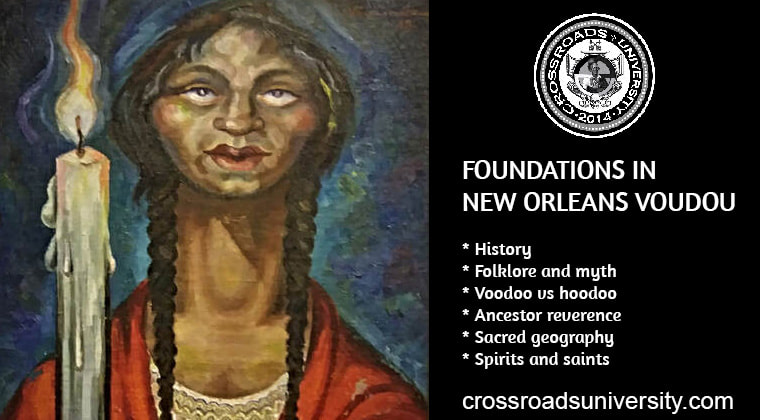


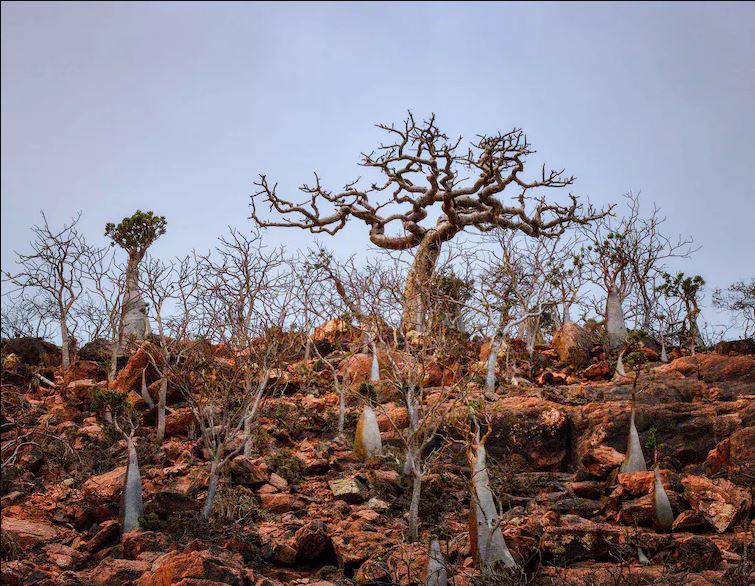
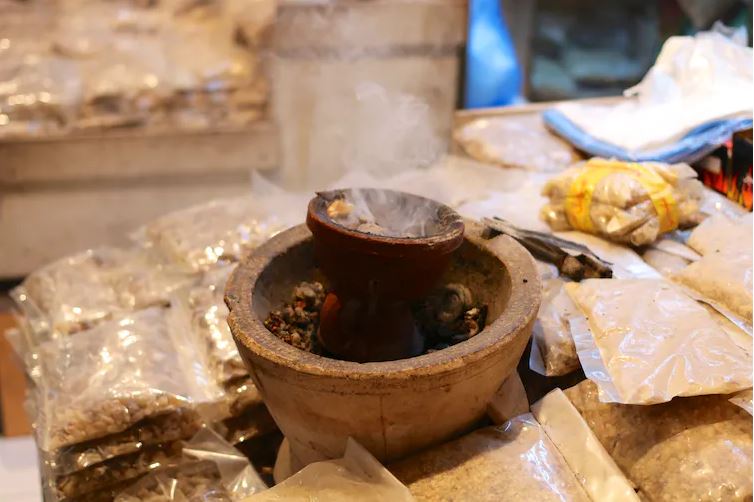


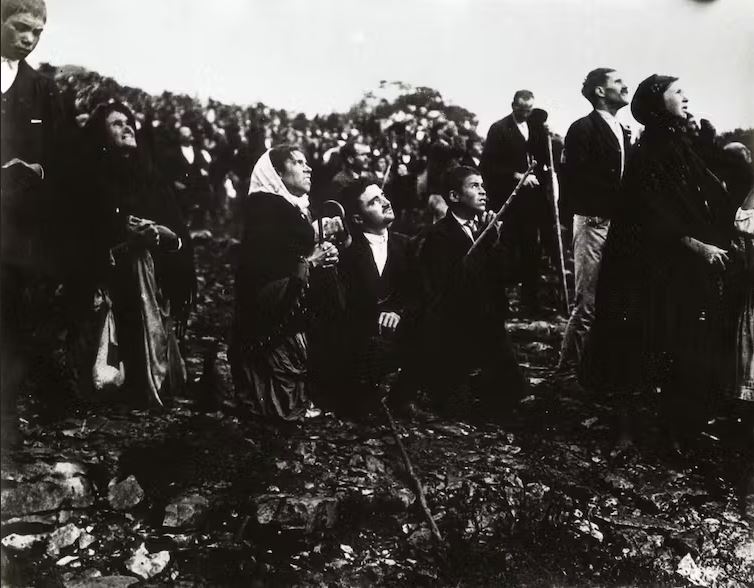
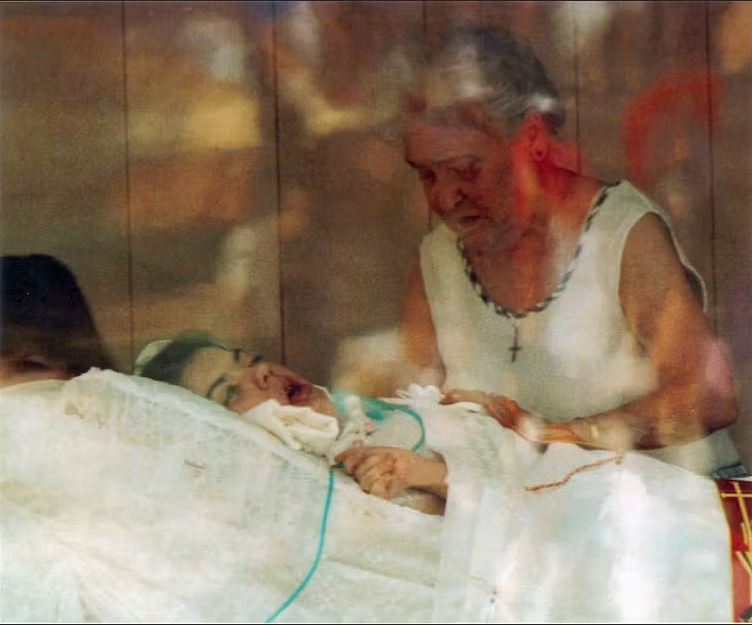
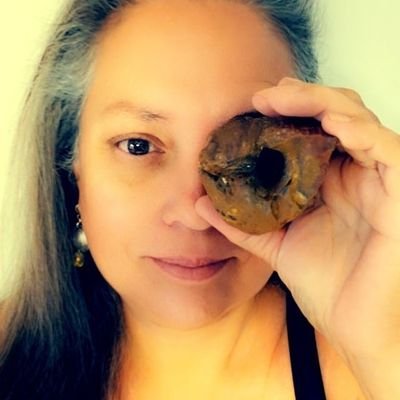
 RSS Feed
RSS Feed


